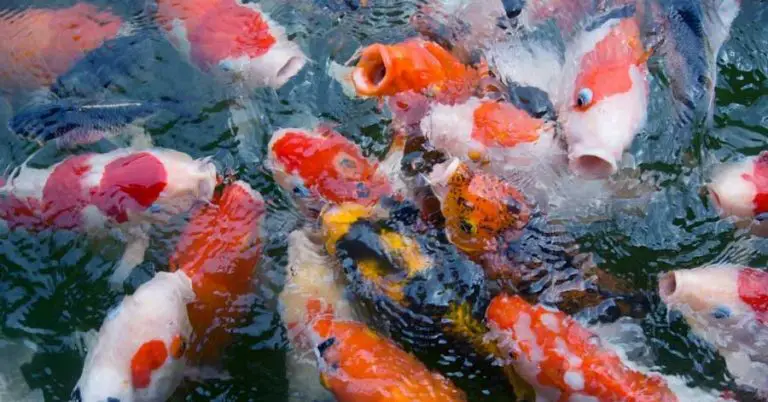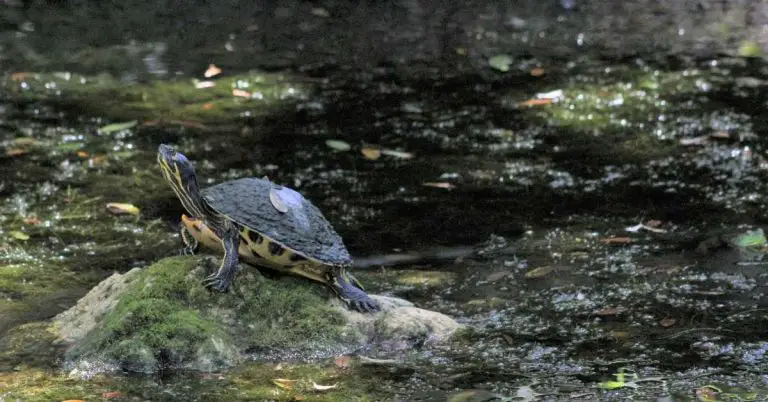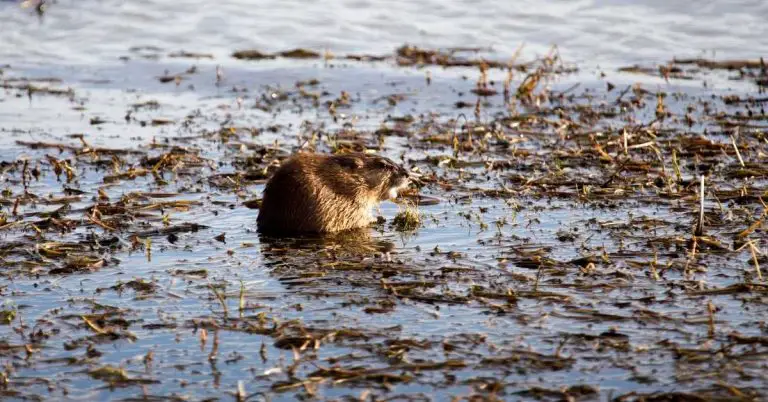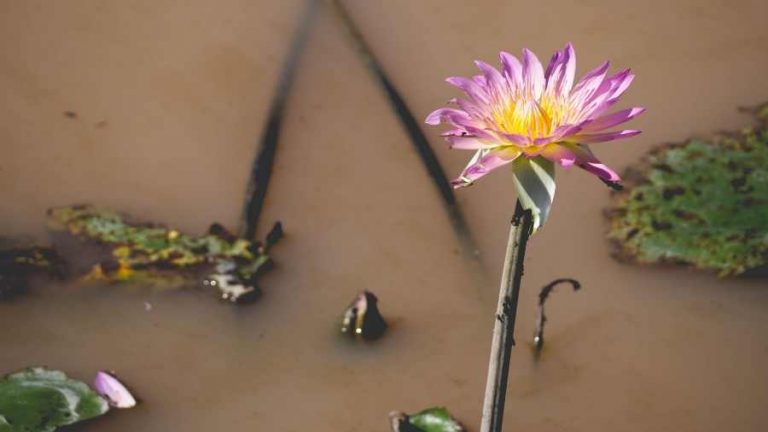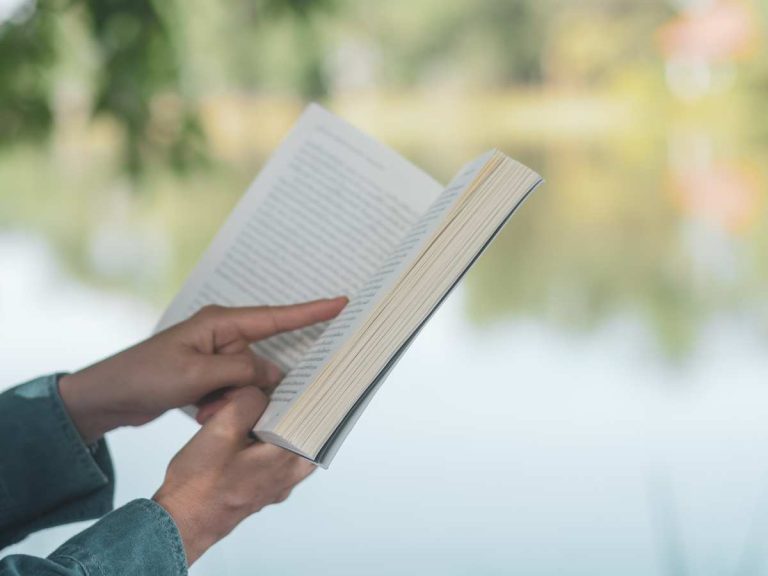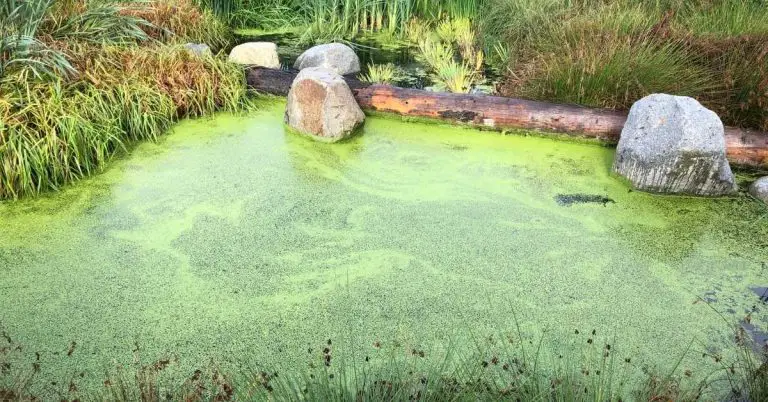What To Put In Your Backyard Pond
When you build a backyard or garden pond, you’re building an entire ecosystem that will become the home to countless organisms. In order for it to all come together, you need to supplies and materials for the job.
When building a backyard pond, you should plan to put in pond liner, rocks, soil, pumps, filters, chemicals (as necessary) as well as any aquatic life like fish and plants. When your pond has all the necessary components put in it, you will have built a sustainable ecosystem that you can enjoy for years to come.
Let’s go over how the basics of building a backyard pond, what should go in and around it as well as the different chemicals necessary to keep the water healthy. We’ll also go over how to remove a backyard pond if you don’t want it anymore and look at a few pond kits to help in building a new one.
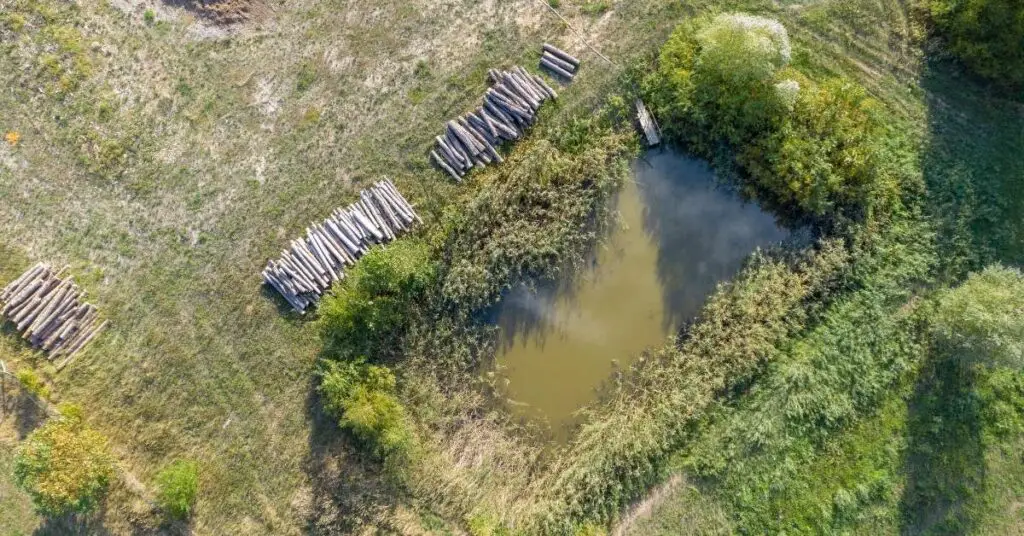
What do I need for a backyard pond?
A backyard pond is a lot more than a hole in the ground filled up with water. There are specific steps you need to follow to build a pond and specific materials needed to go about it.
In brief, you will need the following to build a backyard or garden pond:
- Plants to trap and absorb nutrients that would otherwise overgrow in your pond.
- Fish, especially bottom feeders, to control insects and algae in the water.
- Buildings materials, like soil, sand, rocks, granite and small stones to protect the pond liner.
- Pond liner, to protect the bottom of the pond and prevent it from leaking into the soil.
- Pumps to prevent stagnation in your pond and to keep the water oxygenated.
- Filters to keep unwanted debris out and bacteria levels in your pond under control.
What Do You Put Around A Pond?
One of the best parts about owning and maintaining a backyard pond is the huge array of wildlife and fauna that will make your pond its home. And while most wildlife except fish like birds, lizards and small mammals will find their way to your pond on their own, the plants need to be picked out and planted by you.
A big part of knowing what goes around your pond is understanding how a pond’s ecosystem works.
But in terms of what you should put around the perimeter of your pond, in most cases that’s going to involve plants and rocks. The rocks help to hide the artificial aspects of the pond like pond liner and water hosing, while the plants help support the ecosystem of the pond as well as strength the soil against erosion.
Here is a list of some of the post popular plants to put in and around your pond:
- Waterlilies – A family of flowering, aquatic plants that float on the water and come in beautiful red, yellow, green and other colorful varieties.
- Blur Iris – A graceful plant with with deep blue/purple flowers. Grows in wetland areas and can reach up to 5 feet tall.
- Sweet Flag – This grass-like plant grows well in lots of environments and can survive both partially and fully submerged underwater. Great for water gardens and backyard ponds.
- Mosaic Plant – Named because of the mosaic-like appearance of the leaves, this floating plant blooms into elegant yellow flowers in the shape of a cup. This is a great plant for fish ponds as it provides them with plenty of shelter.
- Water Lettuce – Water lettuce is so named because the green leaves floating on the water resemble a head of lettuce. These are easy plants to maintain and simply float on the surface of the water and do not need to be rooted in the soil below.
- Taro Pond Plants – These plants have dark red stems and plum colored leaves that appear as black. The leaves are often shaped like a heart and can grow over 3 feet high.
- Horsetail Pond Plants – These are long bamboo-like plants that grow in segmented reeds. They can get quite tall – up to 2 feet in height. These plants grow and spread fast and may need to be culled periodically throughout the year.
- Creeping Jenny Pond Plants – This plant is bright green and its small leaves grow in a loose bush-like arrangement with yellow flowers blooming in the summer. This plant is great to use in and around the exterior of your backyard pond to hide pond liner and hosing and give it a natural feel.
- Pickerel Pond Plants – These leafy green plants grow spiked flowers in an assortment of colors. They grow to be over 2 feet tall and make a striking addition to small and large backyard garden ponds.
What Chemicals Do You Need For A Pond?
All bodies of water exposed to the open air are susceptible to microorganisms like algae, fungi and mold overgrowths, even ponds with complex filtering and pumping systems. This is why it’s often necessary to supplement your pond ecosystem’s natural cleansing mechanisms with occasional chemical treatments.
The goal with chemical treatments, as with all maintenance of backyard and garden ponds, is to restore and maintain the natural chemical balance within the pond.
The Importance Of Aeration
It’s easy to forget that oxygen is a chemical and it plays an important role in all bodies of water. Oxygen is what plants and fish need to live, just like humans need it to breathe. However, instead of deriving oxygen directly from the air like we do, plant life needs its oxygen dissolved into the water.
The primary way oxygen is dissolved into the water is through the processes of aeration and oxygenation. Aeration is the process of mixing air into the water, while oxygenation refers to the amount of oxygen carried in the air that will eventually dissolve into the water and be available for plant and fish life.
Thankfully, this process is easy and doesn’t involve buying chemicals and dumping them into the pond. You simply need to provide some kind of mechanism to get the water moving around. For example, when you splash the water with your hand, you’re also bringing air and oxygen into the water. You can see this happening with the tiny bubbles that form on the surface of the water anytime something disturbs it, like you hand.
But unless you want to sit around splashing the water all day, you need some kind of automatic mechanism to make it happen. For this, most people use a simple pump or even a waterfall or fountain – or all three methods. It doesn’t take much beyond a small pump or fountain to get all the necessary oxygen into the water, especially for a small backyard pond.
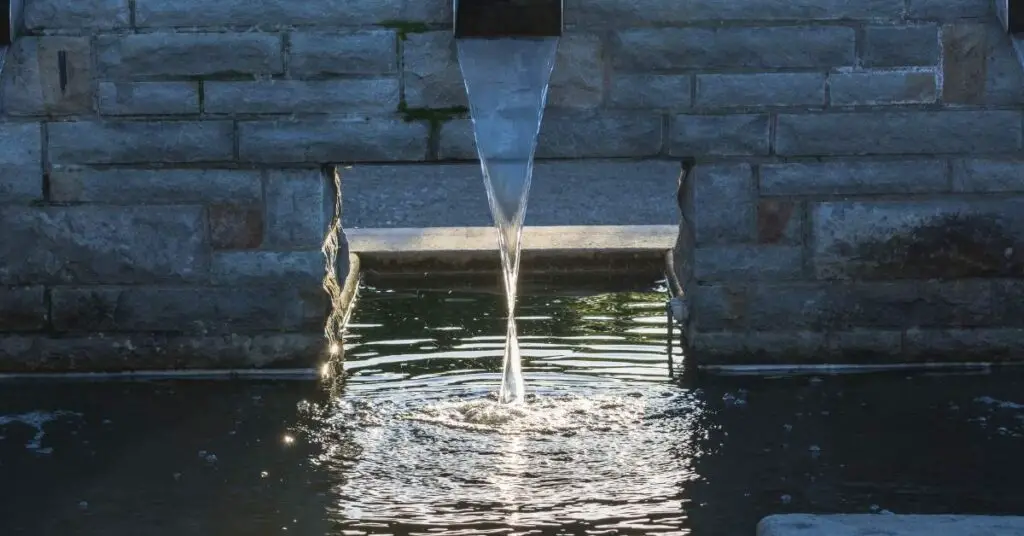
Aluminum Sulfate Helps Keep Pond Water Clear
The clarify of your pond’s water isn’t just an aesthetic issue, it affects all the wildlife present in the pond as well. For example, most fish need at least a foot of visibility or else their population will decline and eventually disappear. Keeping your pond’s water clear is also necessary if you plan on using it as a swimming pond.
One of the most common reasons for poor visibility is the presence of clay and other debris in the water. This can happen for many reasons including erosion, local wildlife and heavy rains. The easiest way to solve this problem is with the application of aluminum sulfate powder to your pond’s water.
When aluminum sulfate is added to water, it binds to the water molecules in a process known as hydrolysis. Hydrolysis helps to clear the water of phosphorous and dissolves decayed organic debris.
As a rule of thumb, use 25-50 pounds of aluminum sulfate per acre-foot of water to keep your pond clear. Also, make sure you distribute the sulfate evenly throughout the pond with a pumping system or waterfall as compared to just dumping it all into the water.
However, keep in mind that aluminum sulfate should not be your only strategy for keeping your pond water clear. You should still be using pumps and filters along with maintaining a carefully balanced ecosystem to keep your water crystal clear all year long.
Make Sure To Check And Maintain The Acidity Levels Of Your Pond
Just like humans need certain levels of acid and alkalinity in our food and water to stay healthy, so does all the living organism in a pond as well.
You should regularly check the pH level of your pond to make sure it stays in a neutral range – around a 7-8 pH value. Water that is too acidic will eventually kill your fish and plants, just as water that is too alkaline will as well.
For water that’s too alkaline, common water treatment chemicals like aluminum sulfate can reduce it to a more appropriate level.
For pond water that’s too acidic, the best way to reduce it is with carbon dioxide. Carbon dioxide levels in the water can be raised by adding organic material like soybean, corn and cottonseed meal (among others). When this organic material decays in the water it releases carbon dioxide, thereby lowering the acidity of the pond and raising its pH level.
Another thing to consider is that plants consume carbon dioxide, so if there are too many plants or algae in the pond the water can become too acidic and cause fish and other wildlife to die. You can control plant and algae growth with herbicides and the addition of fish that feed on it.
Also, keep in mind that different kinds of fish require different levels of acidity and alkalinity. Make sure to do your research before placing any new fish in your pond.
How To Fill Your Backyard Pond
If you plan on removing or moving your backyard pond, there are some steps you need to take to fill the old pond in properly.
- Remove fish and other wildlife from the pond – keep them in a fish tank or temporary pool.
- Pump out the water using a submersible pump. Remember to flush and clean the pump when you’re done because it will most likely be very dirty.
- Remove rocks, stones and gravel from the bottom of the pond. This includes whatever other objects are in there as well.
- Remove the pond liner – don’t be tempted to bury it!
- Scoop or shovel out sludge, gravel and other left-over much under and around where the pond liner was.
- Fill the hole with gravel and stones.
- Cover the stones with a layer of smaller stones or small gravel.
- Pack the gravel either with a shovel or by stepping over it several times. Make sure it’s even and covers the larger stones completely.
- Add a level of soil, or more gravel if you prefer, to make it level with the rest of your backyard or garden. Alternatively, you can add flat stones on top to create a patio-like environment.
Of course, there are lots of different ways to accomplish this same task, but just make sure you completely clean the pond debris first and then add successive layers of materials to keep the land and soil stable.
Backyard Pond Kits
Most people simply make a list of the supplies they need for their pond and buy them separately, but it can be convenient to buy them all at once in a kit. Thankfully, Amazon provides lots of options, which is nice if you don’t live near a pond supply store.
Here are a few kits that should work well to get most people started. Remember that with any such kits, you generally get what you pay for. Make sure these kit meet the dimensions of your pond before purchasing.
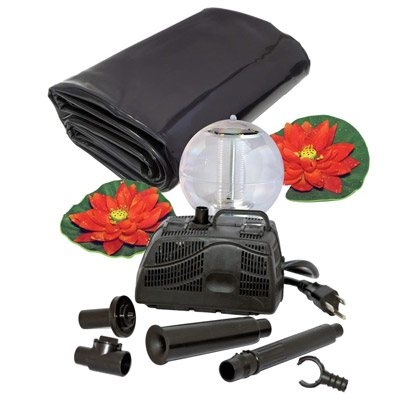
Koolscapes 270 Gallon Pond Kit with Lighting
Includes: Pond liner, pump (no filter), 2 fountain heads w/ telescopic riser, 2 silk water lilies.
Price Range: $99-$120
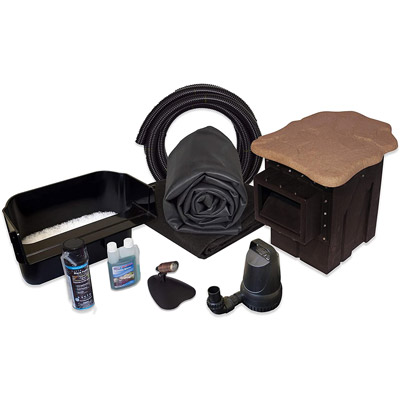
Simply Ponds 2100 Water Garden and Pond Kit with 15 Foot x 20 Foot EPDM Liner
Includes: Filtration system, skimmer, submersible pump, pond liner, underlaymant, submersible lights, tubing, treatment chemicals, plumbing. Made in USA.
Price Range: $600-$700
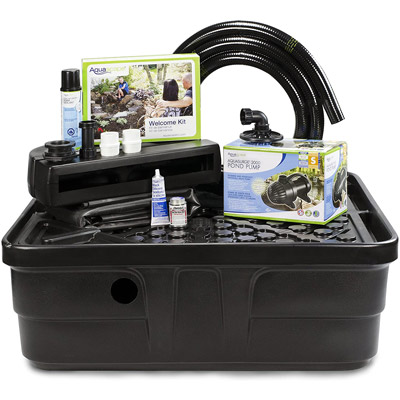
Aquascape 83013 Landscape Backyard Waterfall Fountain Kit
Includes: Underlayment, liner, pump filtration, installation accessories, instructions and water feature welcome kit that makes it easy to install your new Water feature.
Price Range: $950-$1050
Have any tips or questions about building a backyard pond? Let me know in the comment section below.

